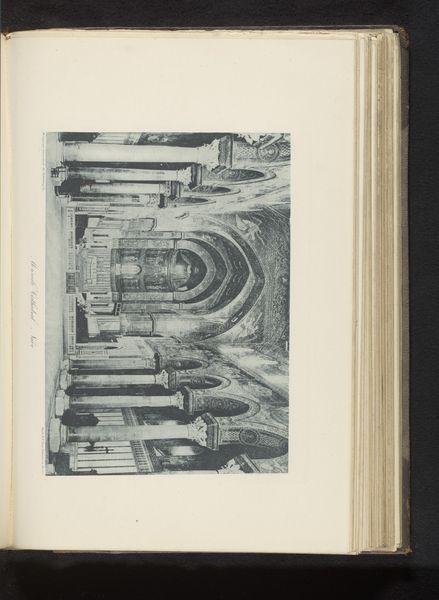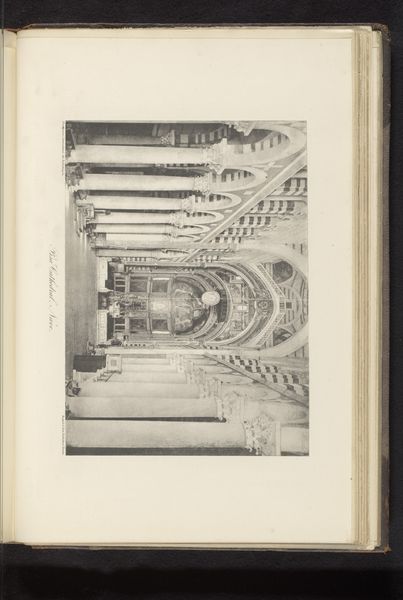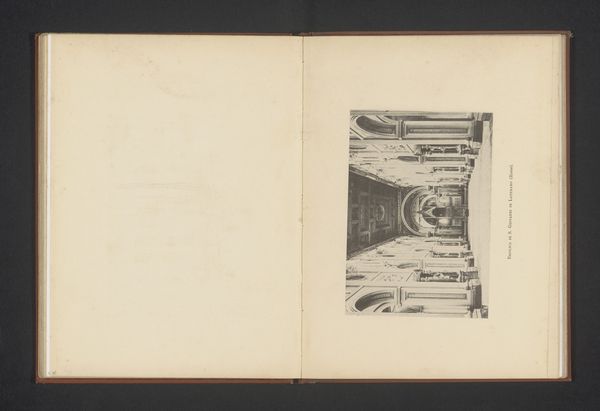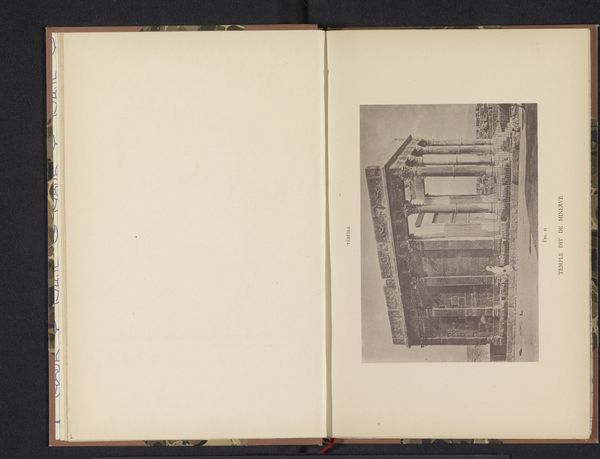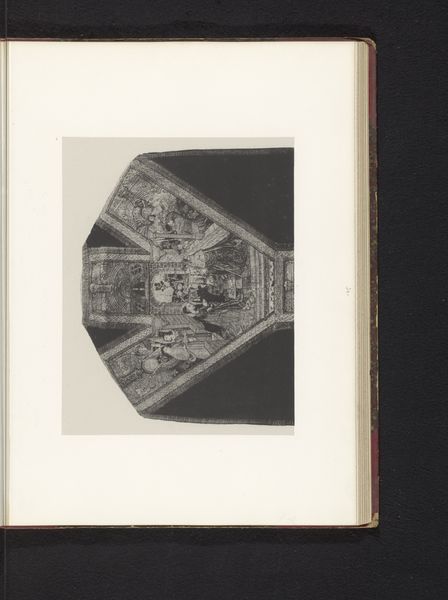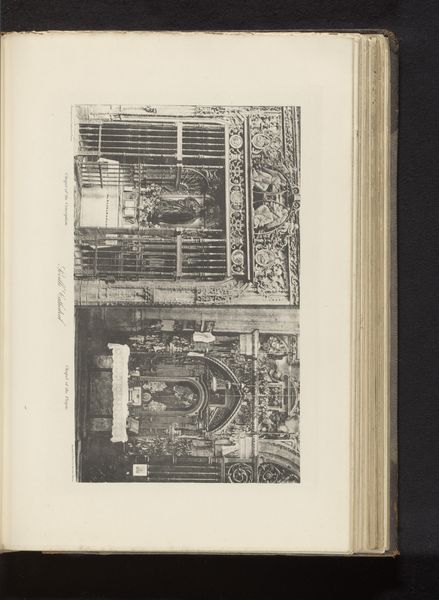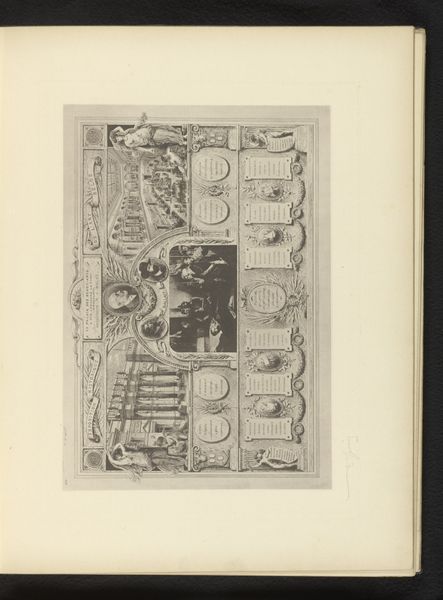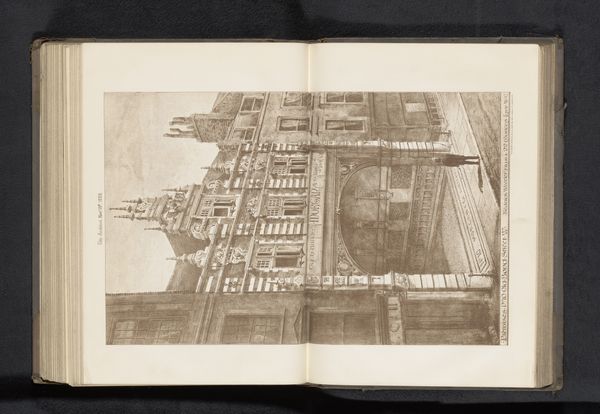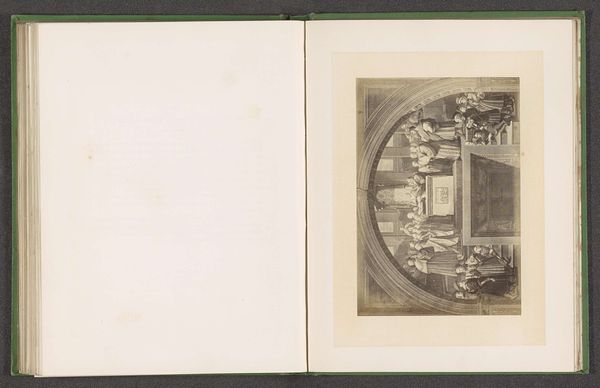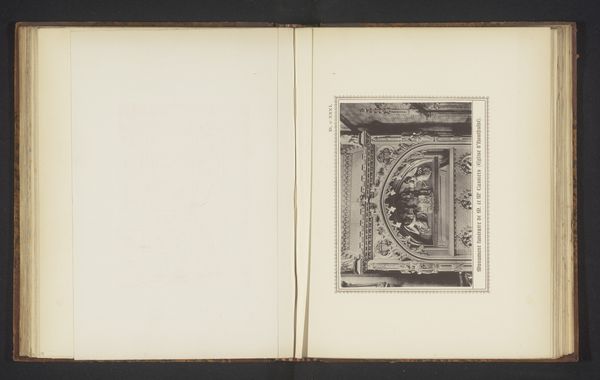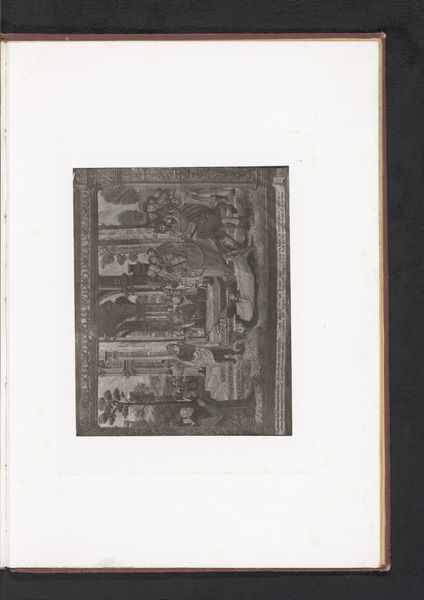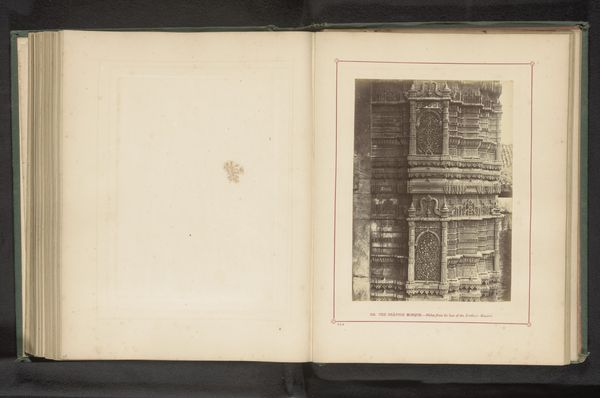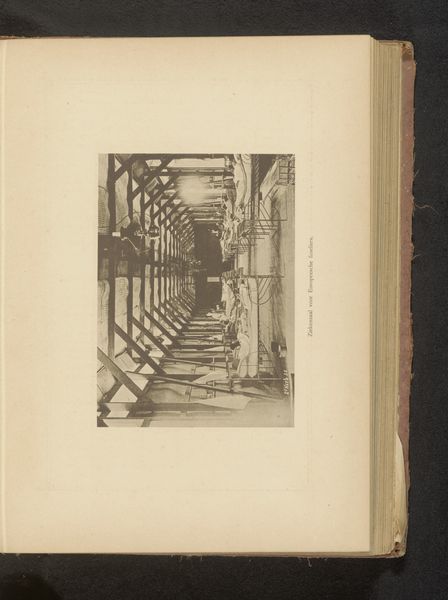
Ingangen van de Giralda toren en de doopkapel van de kathedraal van Sevilla before 1886
0:00
0:00
print, photography, architecture
#
medieval
# print
#
photography
#
geometric
#
cityscape
#
architecture
Dimensions: height 425 mm, width 300 mm
Copyright: Rijks Museum: Open Domain
Editor: This image, titled "Ingangen van de Giralda toren en de doopkapel van de kathedraal van Sevilla," dating to before 1886, appears to be a print of a photograph, depicting two intricately detailed arched doorways. The contrast between light and shadow creates a striking geometric pattern, almost dizzying in its complexity. How do you approach analyzing this piece from a formal perspective? Curator: One must observe the photograph's inherent qualities, specifically the relationship between line, shape, and tone. Note how the photographer has meticulously captured the ornate details of the architecture. The geometry you mentioned isn't merely representational; it's a formal device. The interplay of circles and rectangles within the arches creates a visual rhythm. Do you perceive how this rhythm structures the entire composition? Editor: Yes, the arches create a symmetrical division, a balance that contains all the tiny chaotic carvings. Is there any structural significance to the photographic medium itself in representing architecture? Curator: Indeed. Photography, especially in the 19th century, provided a unique lens – both literally and figuratively – through which to examine architectural form. Unlike a painting, photography’s supposed indexicality lends a sense of objective truth. However, the photographer's choices – the angle, the lighting – inevitably shape our perception. The lack of color further directs attention to texture and form, doesn't it? Editor: It definitely makes me focus on the carved details and how light defines them. It’s interesting to think about how the photographic medium can reinforce or even challenge our understanding of architectural space. Curator: Precisely. By analyzing these formal elements, and reflecting on photography as medium and material, we come closer to an understanding of the image's aesthetic impact. This also reveals its unique contribution within the history of architectural representation. Editor: I see the architecture of the doorway, I see its history in stone. Thank you for shedding light on its compositional components and structural medium!
Comments
No comments
Be the first to comment and join the conversation on the ultimate creative platform.

